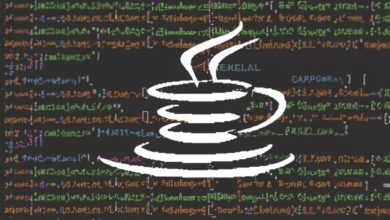
Fibonacci Series Program In Java
The Fibonacci sequence is a famous series of numbers where each number is the sum of the two preceding numbers. Starting with 0 and 1, the first few numbers in the sequence are:
0, 1, 1, 2, 3, 5, 8, 13, 21, 34, 55, …
This article explores different ways to program the Fibonacci sequence in Java, with breakdowns of each approach and comparisons for better understanding.
Understanding the Fibonacci Sequence
- Definition: Each number in the sequence is the sum of the two preceding numbers, except for the first two numbers (0 and 1) which are fixed.
- Formula: F(n) = F(n-1) + F(n-2) for n > 1
- Recursive Nature: The definition inherently suggests a recursive approach for programming the sequence.
1. Iterative Approach with Loop
This method uses a loop to calculate each Fibonacci number by iteratively adding the previous two numbers.
Java
public class FibonacciIterative {
public static void main(String[] args) {
int n = 10; // Number of terms to generate
int a = 0, b = 1; // Initialize starting values
System.out.println("Fibonacci Series:");
for (int i = 0; i < n; i++) {
System.out.print(a + " ");
int temp = a; // Store the previous value of a
a = b; // Move b to a
b = temp + b; // Calculate the next Fibonacci number
}
}
}
Explanation:
- We define variables
nfor the number of terms anda,bfor the two preceding numbers. - Inside the loop, we print the current value of
a. - We then perform a swap operation to update
aandb:- Store the current value of
ain a temporary variable (temp). - Update
awith the current value ofb. - Calculate the next Fibonacci number by adding the previous two values (
tempandb) and store it inb.
- Store the current value of
Advantages:
- Easy to understand and implement.
- Efficient for generating a limited number of terms.
Disadvantages:
- May not be efficient for large values of
ndue to repeated calculations.
2. Recursive Approach
This method defines a function that calls itself with progressively smaller values of n until it reaches the base case (n = 0 or 1).
Java
public class FibonacciRecursive {
public static int fibonacci(int n) {
if (n == 0) {
return 0;
} else if (n == 1) {
return 1;
} else {
return fibonacci(n-1) + fibonacci(n-2);
}
}
public static void main(String[] args) {
int n = 10;
for (int i = 0; i < n; i++) {
System.out.print(fibonacci(i) + " ");
}
}
}
Explanation:
- We define a
fibonaccifunction that takesnas input. - The base cases are defined for
n == 0andn == 1. - For other values of
n, the function recursively calls itself withn-1andn-2to calculate the previous two Fibonacci numbers and adds them to obtain the current term. - The
mainfunction calls thefibonaccifunction for each term and prints the result.
Advantages:
- More concise and elegant code compared to the iterative approach.
- Suitable for generating any number of terms due to the recursive nature.
Disadvantages:
- Can be computationally expensive for large values of
ndue to repeated function calls. - May lead to stack overflow exceptions for very large values of
n.
3. Memoization Technique (Completion)
Java
public static int fibonacci(int n) {
if (memo.containsKey(n)) {
return memo.get(n);
} else if (n == 0) {
return 0;
} else if (n == 1) {
return 1;
} else {
int result = fibonacci(n - 1) + fibonacci(n - 2);
memo.put(n, result);
return result;
}
}
Explanation:
- We introduce a
HashMapnamedmemoto store previously calculated Fibonacci numbers. - The function first checks if the result for
nalready exists in thememo. If so, it directly returns the stored value. - If the result is not available, the base cases and recursive calls remain the same as the original recursive approach.
- However, after calculating the
result, we store it in thememowith the keyn, ensuring it’s available for future calls with the same input.
Comparison of Approaches:
| Approach | Advantages | Disadvantages |
|---|---|---|
| Iterative | Easy to understand, efficient for small n | May be inefficient for large n due to repeated calculations |
| Recursive | Concise, works for any n | Computationally expensive for large n, risks stack overflow |
| Memoized Recursive | Combines benefits of both, efficient for both small and large n | Requires additional memory for the memoization table |
Choosing the Right Approach:
The best approach depends on your specific needs and resources. For small sequences and simplicity, the iterative approach is suitable. For larger sequences and code conciseness, the recursive approach can be sufficient with caution for performance. But for optimal performance and efficiency regardless of sequence size, the memoized recursive approach is the recommended choice.
Further Enhancements:
- Instead of a
HashMap, consider using an array for faster access to consecutive values in the Fibonacci sequence. - Explore alternative algorithms like matrix multiplication for even faster computation of large sequences.
Remember, the Fibonacci sequence is a fascinating example of iterative and recursive concepts in programming. Experimenting with different approaches can deepen your understanding of both strategies and their performance trade-offs.




